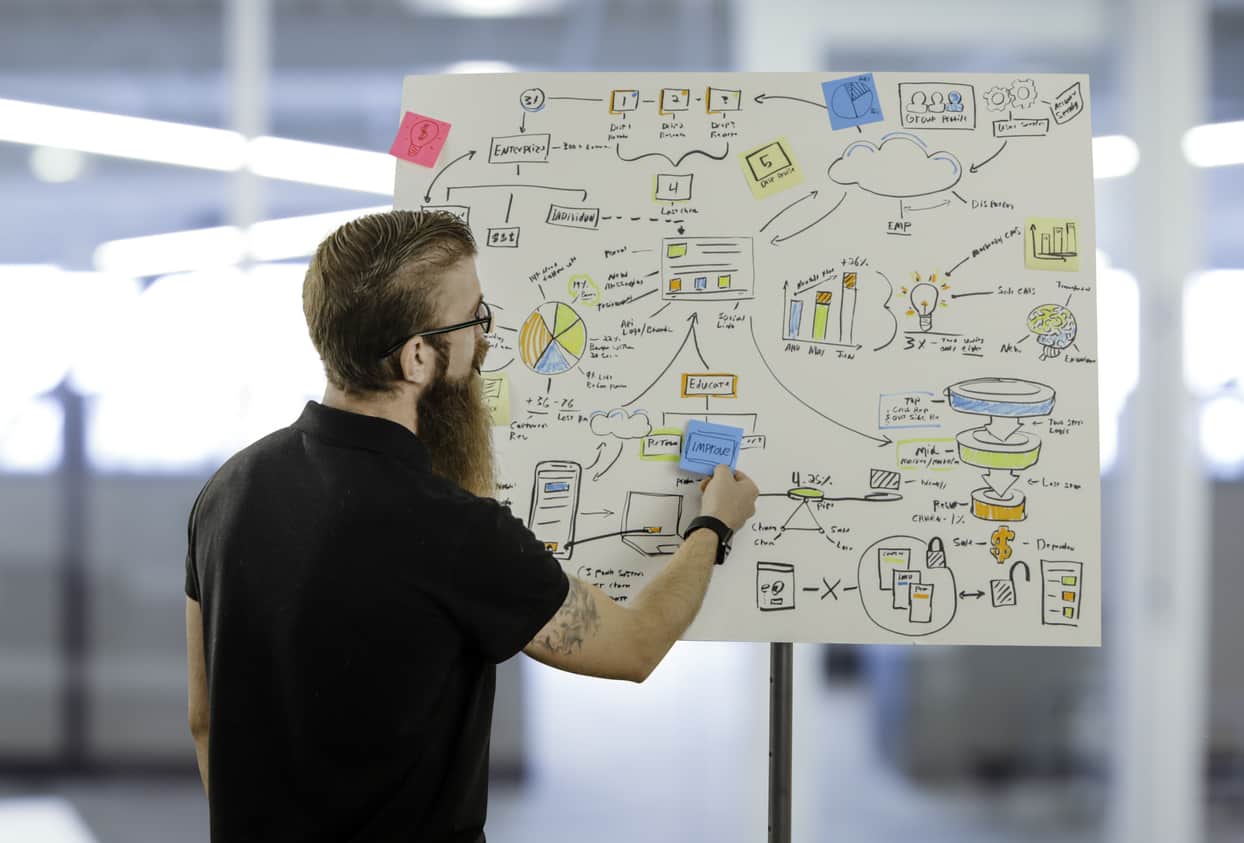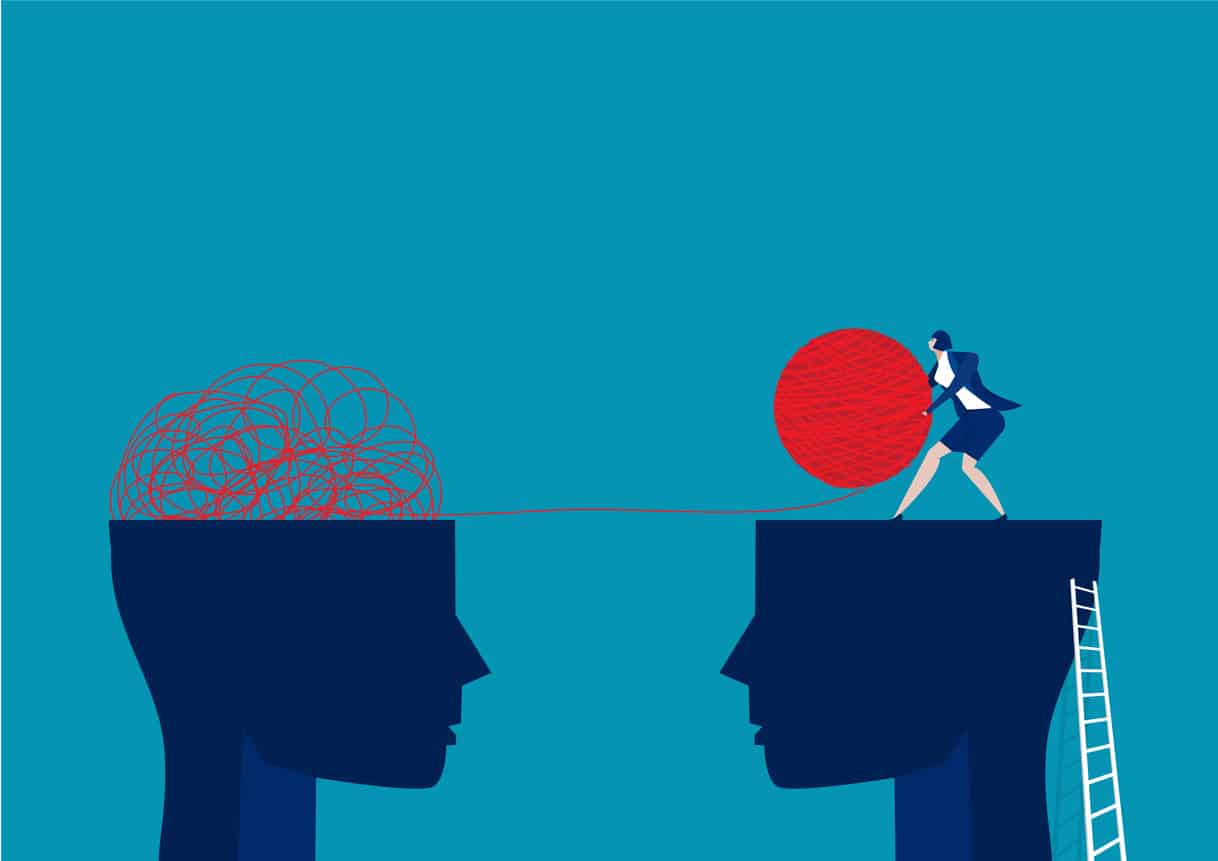The market is as evolving as ever, if not more during the current pandemic. The secret of staying relevant and ahead in such a dynamic environment is innovation – but constant innovation is easier said than done. How do you ensure that you stay ahead of your competition when the market demands you bring a fresh take on things all the time? The answer, perhaps, lies in the way you strategise your approach to innovation – through design thinking.
Design thinking is an empathy-driven formula for crafting human-centric solutions. As a result, design thinking also drives innovation, the kind which provides brands with ideas that are both actionable and effective. Design thinking helps you make innovation a habit and not just an occasional inspiration-induced outcome. Design thinking stages take you through the entire process of crafting solutions that keep you ahead of the curve.

Design Thinking Stages
Design thinking can be divided into five specific stages – empathy, definition, ideation, prototyping, and testing. Now let us look into each of these stages to understand how they can contribute to your work every day.
Empathy:
Design thinking tries to uncover potential solutions that respond to the end user in unique ways. In this stage, you will be encouraged to place yourself in the user’s shoes and react to your product or solution. Think of how they will interact withe the idea that you are offering. It basically requires you to reclaim the human experience and let technology enable that experience. Empathy allows you to bring out the unique element that your users might be looking for and gives you a chance to stand out in the crowd. While working on a product, it is essential you think ahead and visualise the ways in which it delivers a human-centric experience. In the end, it is the essentially the idea (and not technology) that is capable of driving innovation.
If in case you are unable to figure out what your target audience might be looking for, reach out to a subject matter expert. Research is the first step towards empathy so research your market, and your audience. Consult SME to get their expert advice on the matter. You can also enage with your target group to understand what they are looking for. Immerse yourself in the physical environment of the product development to understand how the product is intended to interact with the user.
Define:
Design thinking aims to solve the ‘wicked’ and it does that by acknowledging the problem. These ‘wicked’ problems are extremely complicated and is hard to even define. In this stage of design thinking, it is important to give some shape to the different kinds of interrelated complicated problems that you have set out to solve.
Define the problem by forming a problem statement which captures it adequately and can be broken down for further analysis. It is not just important to understand what your company or brand wants but also the problems that can be solved and the areas of improvement. Synthesize the information gathered during the empathy stage to define what the user needs.
Ideation:
Since design thinking is a solution-oriented approach, device as many ideas around that as possible. Understand the problem statement and look for clues to come up with potential solutions. To think in a unique manner, focus on the user perspective and what’s missing.
This stage encourages you to be creative. Ideate along the lines of not just what is required but could be. Think out of the box. This is the stage where you do not get tied down with limitations regarding scalability and more. Brainstorming is a very effective way of formulating unique solutions.
Prototype:
Ideas alone will not get you anywhere unless you test their effectiveness. The prototyping stage is all about experimentation and elimination. The goal here is to experience all the possible roadblocks associated with the probable solutions and figure out the top solutions which are more likely to work. Prototyping additionally helps in understanding user reactions, and expectations from any said solution.
Testing:
Though this is the final stage of design thinking, this isn’t quite where the journey ends and you will soon understand why. The testing stage is all about real users and real data. Testing allows edits, reforms and other changes to optimise the solution. However, this is often an iterative process where the final solution is crafted after going through all the previous stages of design thinking to ensure only the best solution reaches the user. Without an extensive testing phase, you cant ensure the possibility of scaling up the solution. This is how the iterative nature of design thinking process drives innovation and delivers human-centric results.

Top companies around the world like Apple, Google, Airbnb, Adidas and more have made design thinking a part of their business strategy and now you know why. To truly unlock the potential of your own ideas and work, get a first hand experience of this process – check out our design thinking program.








